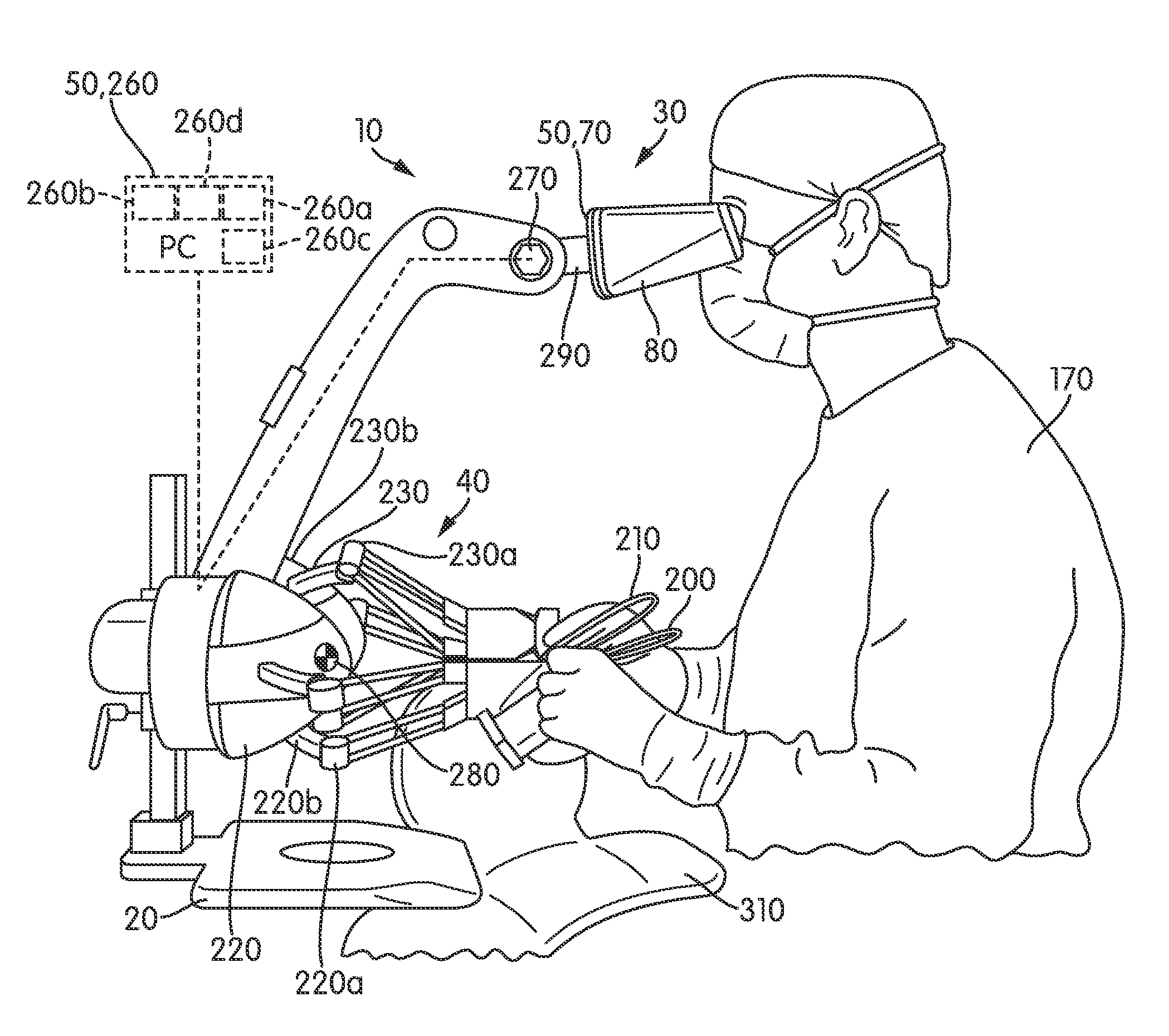Microsurgery simulator
a micro-surgery and simulator technology, applied in the field of micro-surgery simulators, can solve the problems of not well representing the actual human anatomy, inability to support a variety, and high cos
- Summary
- Abstract
- Description
- Claims
- Application Information
AI Technical Summary
Benefits of technology
Problems solved by technology
Method used
Image
Examples
Embodiment Construction
[0008]There are simulators available for minimally invasive surgical (MIS) skills training Key aspects of various conventional simulators in contrast to one or more embodiments of microsurgical simulators according to the present invention are that the real-life microsurgical procedures are performed with the surgeon's / clinician's neither having direct contact with the patient nor looking at the patient (they typically look at a monitor displaying an indirect view of the surgical site taken by a tool such as an endoscope or fluoroscope) and that the computational means used to model tool-tissue interaction are not designed to replicate real-life behavior to a provable objective metric compared to real life. Various conventional MIS simulators also do not operate on the small motion scale of microsurgical procedures. Finally, the software in various conventional MIS simulators is typically rigidly configured to work with only specific physical interfaces so that they cannot be reconf...
PUM
 Login to View More
Login to View More Abstract
Description
Claims
Application Information
 Login to View More
Login to View More - R&D
- Intellectual Property
- Life Sciences
- Materials
- Tech Scout
- Unparalleled Data Quality
- Higher Quality Content
- 60% Fewer Hallucinations
Browse by: Latest US Patents, China's latest patents, Technical Efficacy Thesaurus, Application Domain, Technology Topic, Popular Technical Reports.
© 2025 PatSnap. All rights reserved.Legal|Privacy policy|Modern Slavery Act Transparency Statement|Sitemap|About US| Contact US: help@patsnap.com



